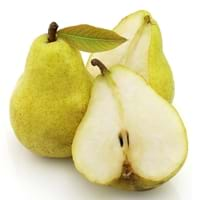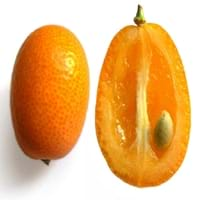Health Benefits
Arthritis prevention, Cancer prevention, Gout treatment, Heart care
Cancer prevention, Cures gastro-intestinal troubles, Heart care, Increase in haemoglobin, Increases metabolic rate
General Benefits
Anti-inflammatory properties, Boosts immune system, Controls blood pressure, Controls blood sugar levels, Cures fever, Digestive aid, Sore throat treatment
Anti oxidant properties, Anti-inflammatory properties, Healing of wounds, Helps in weight loss, Strengthens bones
Skin Benefits
Reduces wrinkles, Treatment of acne
Anti-aging benefits, Reduces wrinkles, Treatment of dark spots
Hair Benefits
Promotes longer and healthier hair, Shiny hair
Promotes longer and healthier hair, Protects hair, Shiny hair
Allergy Symptoms
Anaphylaxis, Digestive Problems, Itching, Skin Rashes, Swelling
Abdominal pains, Coughing, Diarrhea, Digestive Problems, Drop in blood pressure, Hives, Itching, Nausea, Tingling sensation in wrist and face, Vomiting, Wheezing
Side Effects
Allergic reaction
Allergic reaction
Best Time to Eat
As a snack in the late afternoon, Don't consume at night and before bed, Eat the fresh ones, avoid mixing with any other foods, don't eat after meal., Morning time (before lunch)
As a snack in the late afternoon, Don't consume at night and before bed, Eat the fresh ones, avoid mixing with any other foods, don't eat after meal., Morning time (before lunch), Strictly avoid empty stomach
Vitamin B5 (Pantothenic Acid)
Vitamin C (Ascorbic Acid)
Vitamin K (Phyllochinone)
Phytosterol
Not Available
Calories in Fresh Fruit with Peel
Calories in Fresh Fruit without Peel
Not Available
Not Available
Calories in Frozen Form
Not Available
Not Available
Calories in Dried Form
Not Available
Not Available
Calories in Canned Form
Not Available
Not Available
Season
Autumn, Summer, Winter
Autumn, Winter
Varieties
Green Anjou, Red Anjou, Bartlett, Red Bartlett, Bosc, Comice, Concorde, Forelle, Seckel and Starkrimson
Hong Kong, Marumi, Meiwa, Centenniel and Nagami
Color
Yellow
Orange, Red, Yellow
Inside Color
White
Orange
Taste
Crunchy, Sweet
Sweet, Tart
Origin
China, Japan
China
Soil Type
Clayey, Loamy, Sandy
Clay, Sandy loam, Well-drained
Climatic Conditions
Cold, Hot, Without frosts
Cold, Warm
Facts about
- The first pear tree was planted in North America in 1620.
- The Chinese considered the pear fruit to be a symbol of immortality.
- This fruit was used as a natural remedy against nausea in ancient Greece.
- The entire kumquat fruit is edible, except few seeds.
- The taste of kumquat skin is sweet while inner flesh is tart.
- There are some hybrid varieties of kumquats such as mandarinquats, orangequats and limequats.
Other Countries
Argentina, Belgium, India, Italy, Japan, South Africa, Spain, Turkey, United States of America
Brazil, Mexico, Spain, United States of America
Top Importer
Europe
United Kingdom
Botanical Name
Pyrus communis
Citrus japonica
Synonym
Not Available
Fortunella margarita
Subkingdom
Tracheobionta
Tracheobionta
Division
Magnoliophyta
Magnoliophyta
Class
Magnoliopsida
Magnoliopsida
Species
P. communis
C. japonica
Generic Group
Rose
Citrus fruit
Difference Between Pear and Kumquat
We might think that Pear and Kumquat are similar with respect to nutritional value and health benefits. But the nutrient content of both fruits is different. Pear and Kumquat Facts such as their taste, shape, color, and size are also distinct. The difference between Pear and Kumquat is explained here.
The amount of calories in 100 gm of fresh Pear and Kumquat with peel is 57.00 kcal and 71.00 kcal and the amount of calories without peel is Not Available and Not Available respectively. Thus, Pear and Kumquat belong to Low Calorie Fruits and Low Calorie Fruits category.These fruits might or might not differ with respect to their scientific classification. The order of Pear and Kumquat is Rosales and Sapindales respectively. Pear belongs to Rosaceae family and Kumquat belongs to Rutaceae family. Pear belongs to Pyrus genus of P. communis species and Kumquat belongs to Citrus genus of C. japonica species. Beings plants, both fruits belong to Plantae Kingdom.









